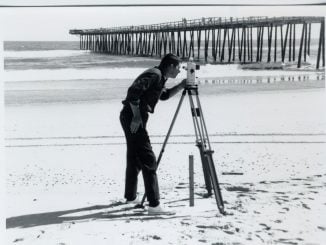July 25, 1729
North Carolina becomes a royal colony
North Carolina became a royal colony when the Lords Proprietors sold the colony to King George II. South Carolina had become a royal colony 10 years prior, setting the stage for North Carolina to follow suit. The English crown, long dissatisfied with proprietary and corporate colonies, had begun the process of converting those colonies to royal control in the 1680s. North Carolina’s sale was the culmination of legal proceedings initiated in 1706 by Queen Anne. Having never made a profit from the colony, most of the proprietors sold their shares back to the crown. Only Sir George Carteret, Earl of Granville, refused to sell his shares, creating the Granville District across the entire top portion of the colony.
July 25, 1780
Horatio Gates takes command in Randolph County
On this day Major General Horatio Gates assumed direct command of the American forces in the Southern Military Department at their campsite on the Deep River in Randolph County. He volunteered for the Continental Army and served as a staff officer before receiving field command. After leading the Americans to victory against British General John Burgoyne at Saratoga, Gates was propelled to the forefront of American military heroes. However, his Southern foray was short-loved as he was influenced by faulty intelligence when he embarked on a campaign in South Carolina along a route lacking in food to support his army. On August 16, his exhausted and underfed army was routed by the British at Camden, South Carolina. Nathaniel Greene was soon selected to replace Gates. Gates never received another field command and retired from the army in 1784 and died in New York City in 1806.
July 25, 1960
Greensboro lunch counters open to all races
Greensboro lunch counters opened to sitting customers of all races for the first time. The event was the culmination of a brief and intense desegregation campaign by black activists that sparked similar actions throughout the country. In February of that year, four students from N.C. A&T College began a sit-in at the lunch counter of the downtown Woolworth’s, demanding equal service with white customers. The original demonstrators were joined on succeeding days by more and more protestors, and the campaign they began spread to other stores. After rounds of negotiations, it was agreed that blacks could eat at Greensboro lunch counters. The successful outcome of the campaign marked an important state and national milestone in the on-going civil rights struggle.
July 26, 1863
Civil war skirmish in Hertford County
A skirmish took place between local Confederate forces and a Union expedition led by Major General John G. Foster at Potecasi Creek in Hertford County. The Union troops were ordered to destroy the Confederate rail junction at Weldon. Union raiders had destroyed railroad bridges at Rocky Mount, Tarboro and Greenville. Local Confederates erected minor entrenchments near Potecasi Creek between Winton and Murfreesboro to protect Hill’s Bridge. On their way to Weldon, Foster’s troops were ambushed by Maj. Samuel J. Wheeler’s troops. Wheeler’s force of about 150 or 200 Confederates opened fire from wooded areas along the main road before retreating to the entrenchments and later retreating all together due to the size of the Union force. The remains of the Confederate entrenchments are located in a wooded area just south of U.S. Highway 158 on the Murfreesboro side of the Potecasi Creek Bridge.
July 28, 1918
R.J. Reynolds dies
Richard Joshua Reynolds, founder of one of North Carolina’s most prosperous corporations, died after a battle with pancreatic cancer. Born in 1850, Reynolds grew up in a large and affluent Virginia family. His upbringing gave him many opportunities for education and for learning the family’s tobacco business. In 1874, Reynolds decided to venture into business for himself, purchasing a town lot in Winston, North Carolina. There he built a factory with railway connections. In his first year of operation, he manufactured about 150,000 pounds of Southern flat plug chewing tobacco. By the 1890s, his annual production was in the millions of pounds after he revolutionized the chewing tobacco industry with the addition of saccharine to his flue-cured chew. In 1907, he introduced his Prince Albert smoking tobacco, and in 1911, he followed up with his Camel cigarette, the first genuinely American cigarette and the first to be mass produced. Reynolds amassed great wealth, and found philanthropic ways to share it. His descendants have followed his philanthropic example, with charitable foundations in North Carolina and beyond.
July 29,1924
Burlington Mills begins operations
Entrepreneur J. Spencer Love opened Burlington Mills and after initially struggling, he began experimenting with the newly-created synthetic yarn called rayon. Burlington Mills went on to produce a popular rayon blend bedspread, the success of which allowed Love to diversify into other rayon products including draperies and cloth for garments. During this time Love built new facilities and purchased old cotton mills for conversion to rayon production. By 1955, the business had been renamed Burlington Industries, and had expanded to weaving the new synthetic fabrics nylon, acrylic and polyester. Toward the end of the 20th century, the company operated 130 manufacturing plants with 65,000 employees in 16 states and seven foreign countries and had earned the title of largest textile corporation in the world. Because of the economic challenges affecting the textile industry, Burlington Mills declared bankruptcy in 2001 and was absorbed into the massive International Textile Group in 2004.



